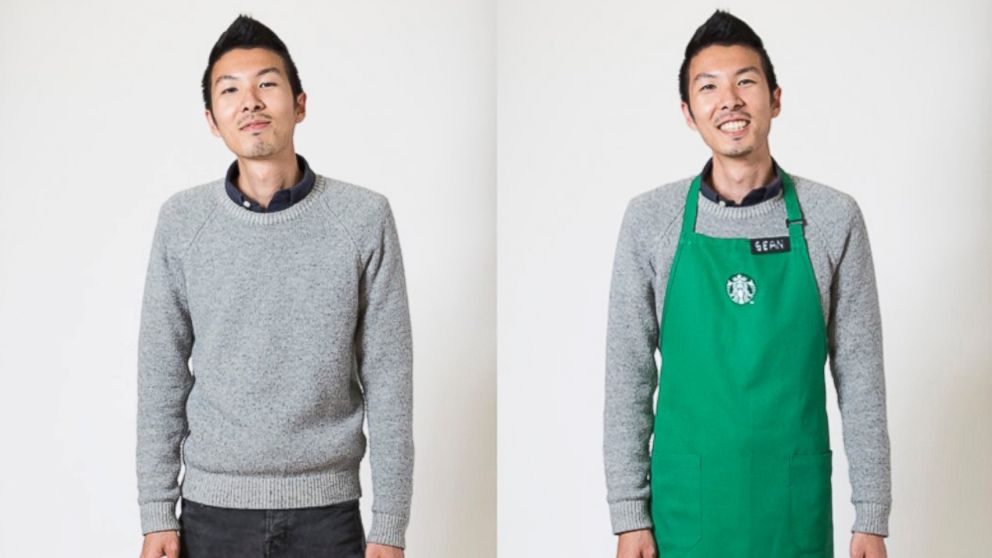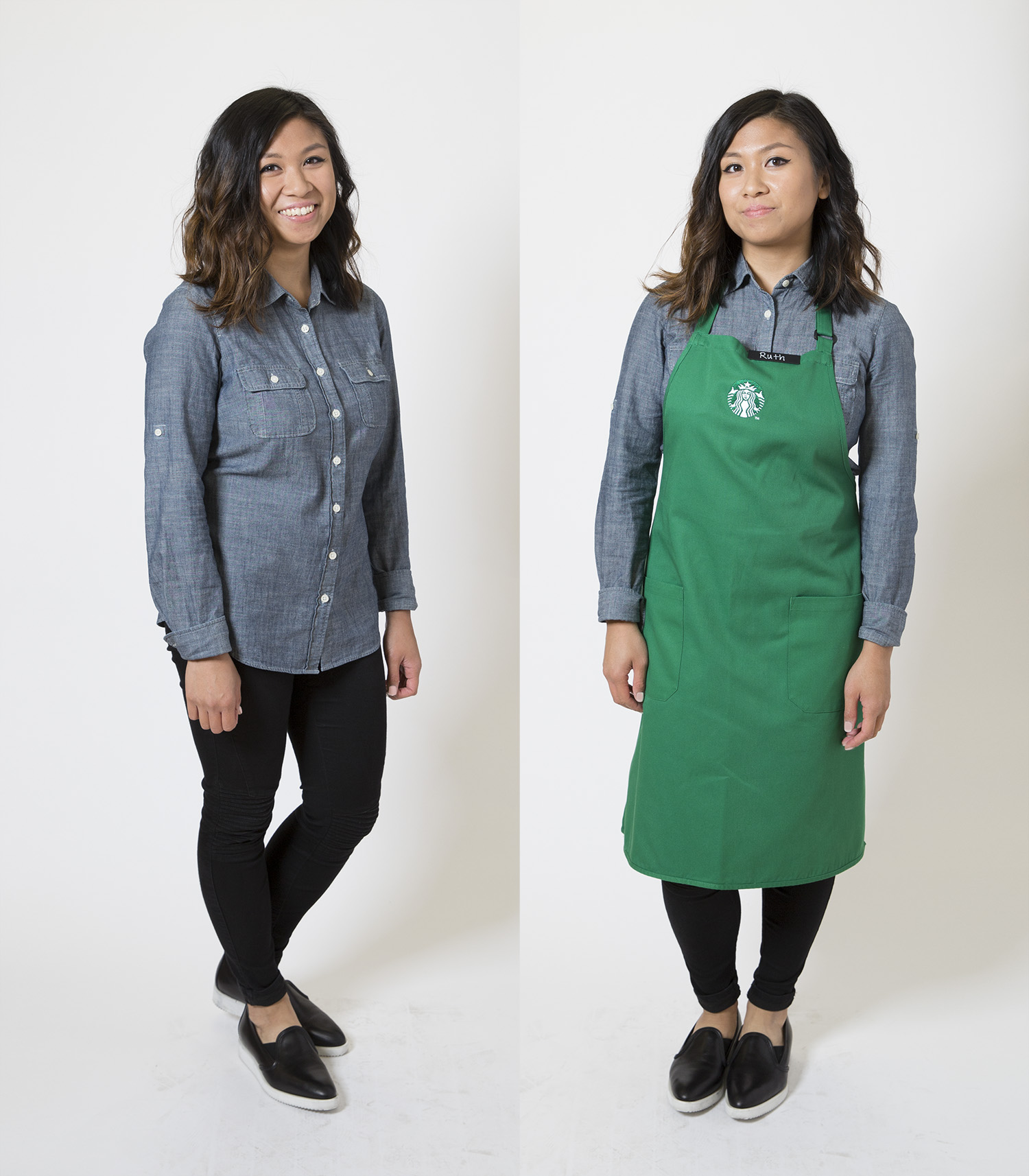Starbucks Relaxes Dress Code, Allowing Baristas to Show More Flair
More than 8,000 shops with about 150,000 workers will get a little more stylish.

— -- No pressure, but the local Starbucks just got a little more hip -- and it won’t be the customers competing for style.
Starting today, the coffee giant’s corporate dress code will be relaxed for employees in North America, allowing “baristas to shine as individuals,” the company said in a statement.
The changes means more than 150,000 employees in more than 8,771 stores will be able to expand beyond the standard corporate black or white shirts that have served as a background to the famous green aprons, and don something a little more self-expressive.
Among the changes handed down yesterday: new style guidelines, a new color palette and new regulations on accents and accessories.
Why the change?
The company said it's looking to boost employee satisfaction, while also making their stores seem a little more cool.
“Our success is rooted in our continual innovation and customization in every aspect of our business and this also applies to offering the best [employee] experience we can,” Starbucks Canada President Rossann Williams said in the statement. “We are responding to what our [employees] have told us and are confident that this will uplift the Starbucks brand.”
A manager for a store in Manhattan where the new guidelines have been piloted, Mario Leon, said in the same statement that customers seemed happy to get a sense of who the baristas were as individuals.
What will be allowed? And what will be prohibited?
Here are some of the changes, starting from top to bottom.
The company will allow permanent and semi-permanent artificial hair coloring, so long as long hair is tied back. Temporary color, sprays, glitter, and chalks are banned for food safety reasons.
But if an employee is having a bad hair day, she or he can cover it with a variety of newly-allowed hats, including fedoras, beanies and newsboy caps. But sorry Texan employees, cowboy hats are among the forbidden headpieces.

Up 'til now, baristas had a binary choice when it came to what could be worn underneath their green apron: a solid black or solid white shirt.
However, the “Lookbook” released by the company tells employees that they are now “invited to wear a range of subdued shirt colors," which they suggest includes, "gray, navy, dark denim and brown.” But the book goes on to advise that “solids are your friend and so are smaller tighter, low-contrast patterns.”
Tops can now take many different forms -- a break from the button-up -- including sweaters, pullovers and turtlenecks, among others. T-shirts, tank tops, hoodies, and “plunging” necklines are verboten and employees are warned against wearing anything with large, non-Starbucks logos.
The company included several color and pattern swatches as examples of what could be worn in keeping with the code.
Regulations on pants will be loosened too. Employees can now choose to wear dark jeans, shorts, skirts or dresses, in addition to the slacks and khakis that were previously allowed.
Shoes in black, gray or brown are allowed so long as they feature only a small amount of accent color; but all shoes must be closed-toe, closed-heel, and cover as much of the top of the foot as possible, the company said. Also, no UGG-style shoes among others, the company added.

But what about ties and tattoos and other accents and accessories?
Starbucks said the key is to make sure that they are “not the main event of your outfit,” but is otherwise cool with its employees sport ties, scarves and fun socks.
Most conservative piercings, including small ear gauges, are allowed, so long as they’re kept to two per ear.
Some accents are still off-limits. Nail polish and coverings are banned because they “could chip or slip into food or drinks” and so are watches, bracelets, wristbands and hand jewelry -- except single-band wedding-style rings.
Who will decide about questionable clothing? And what kind of trouble could employees get into for breaking the rules?
In the guidelines sent to employees, the company says that “store managers will ultimately make the call as to what’s okay within the Dress Code and what’s not.”
In fine print at the end of the guidelines, it warns employees of the expectations saying that inappropriate dress will prevent them from starting their shift.
At worst, the guidelines say, unacceptable appearance “may result in corrective action, including separation from employment.”



